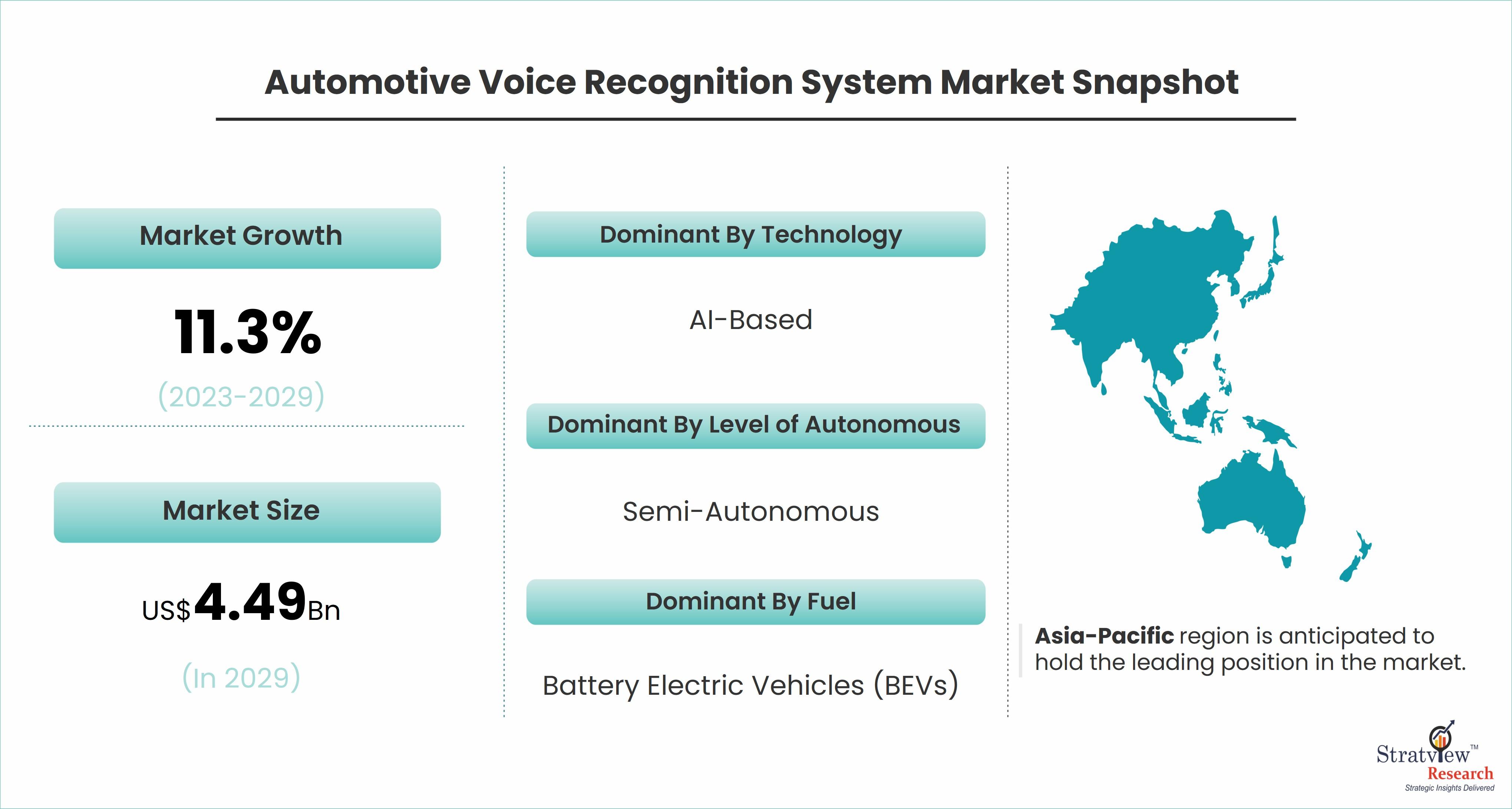Market Dynamics and Competitive Landscape of Automotive Voice Recognition Systemss

The automotive voice recognition system market is growing rapidly, driven by technological advancements, increasing consumer demand for hands-free vehicle controls, and the rise of connected and autonomous vehicles. As voice recognition becomes a crucial feature for modern automobiles, understanding the market dynamics and competitive landscape is key to identifying opportunities and challenges in this evolving sector.
According to Stratview Research, the automotive voice recognition system market was estimated at USD 2.13 billion in 2022 and is likely to grow at a CAGR of 11.3% during 2023-2029 to reach USD 4.49 billion in 2029.
Market Dynamics
- Increasing Demand for Driver Safety and Convenience
One of the primary forces driving the adoption of automotive voice recognition systems is the growing focus on driver safety and convenience. With rising concerns over distracted driving, regulatory bodies and automotive manufacturers are prioritizing solutions that allow drivers to interact with vehicle systems without taking their hands off the wheel or their eyes off the road. Voice recognition systems offer an intuitive way to control in-car functions like navigation, entertainment, and climate control, contributing to safer driving environments.
- Technological Advancements in Artificial Intelligence (AI)
Advances in artificial intelligence (AI) and natural language processing (NLP) are significantly improving the functionality of voice recognition systems. Modern systems can now understand complex commands, learn user preferences, and adapt to different accents and languages. These AI-powered enhancements are increasing the reliability and accuracy of voice systems, making them more appealing to both manufacturers and consumers.
- Rising Adoption of Connected and Autonomous Vehicles
The integration of connected car technologies and the development of autonomous vehicles are fueling the demand for sophisticated voice recognition systems. In connected cars, voice control is becoming essential for interacting with the broader Internet of Things (IoT) ecosystem, enabling drivers to control smart home devices or access online services while on the move. Autonomous vehicles, where passengers require enhanced interaction with the vehicle's systems, will further drive the need for seamless voice communication.
- Challenges of Multilingual Support and Regional Adoption
Despite rapid advancements, voice recognition systems still face challenges related to multilingual support, regional dialects, and varying levels of consumer acceptance across global markets. Companies must continue to invest in localization and customization to ensure their systems work effectively across different regions and demographics.
Competitive Landscape
The automotive voice recognition market is highly competitive, with key players such as Nuance Communications, Apple, Google, Microsoft, and Amazon dominating the industry. These tech giants are leveraging their expertise in AI and voice technology to develop cutting-edge in-car voice systems. Automotive manufacturers like Ford, BMW, Mercedes-Benz, and Tesla are increasingly partnering with tech companies to integrate voice recognition into their vehicles.
Startups and emerging companies are also entering the market with niche voice solutions tailored for specific automotive applications. The competitive landscape is characterized by rapid innovation, with players investing in research and development to enhance the capabilities of their voice systems, differentiate their offerings, and gain a competitive edge.
Conclusion
The automotive voice recognition system market is driven by the increasing demand for safer, more convenient driving experiences, technological advancements in AI, and the rise of connected and autonomous vehicles. However, the market also faces challenges related to regional adoption and multilingual support. With a highly competitive landscape dominated by tech giants and automotive partnerships, innovation will continue to shape the future of voice recognition systems in cars, opening up new opportunities for growth and differentiation.
- Art
- Causes
- Crafts
- Dance
- Drinks
- Film
- Fitness
- Food
- Games
- Gardening
- Health
- Home
- Literature
- Music
- Networking
- Other
- Party
- Religion
- Shopping
- Sports
- Theater
- Wellness


